- Learning time
- 20 minutes
- First play time
- 120 minutes
Principato
Designed by: Touko Tahkokallio
Italy, during the Renaissance. Each player runs a small, fledgling principality, which during the course of the game will grow. The best principalist, if there is such a word, will be crowned winner of the game.
Your principality is your individual player-mat, which begins with four meagre tiles on it – a field and a farm outside the city, and a bank and palazzi within. Between these two locations are your (currently unmanned) wall, which we’ll come to talk about a bit later. You also start with three cubes of yellow (money) green (food) and purple (favor/wild tokens). In the middle of the table a display of action cards will be laid face-up. Finally each player has two starting action cards, which can be played to activate them, and two hidden objective cards, that may or may not reward you with points come the end of the game.
In fact although the boards look pretty, Principato is principally a card game. On your turn you take two actions: any two different (or indeed the same) from the following: swapping a card with one from the display, playing a card from your hand (which sometimes forces you to swap that card as well) or take a favor cube. After both your actions are taken, the left-most card on the display is removed from the game, and a new one is added from the deck.
What you’re trying to achieve with the playing of cards are the development of your principality – cashing in food, money or favors to add tiles to your board which in turn will generate more cubes coming back your way. The cards facilitate this, with simple conversion actions that allow you to spread your tiles and in turn, harvest more resources (the exception is favors: you can have a maximum of three). At the start of the game this ‘engine-building’ is really just improvements, like the growing of a company. But the resources can be used in two other ways as well, and both are key to victory. One is that as you progress through the game’s three decks of cards (I, II and III) opportunities arise to cash in goods for cultural artefacts instead: books, paintings and monuments that will all score points at the end of the game. Potentially many points when combined with your hidden objective cards. The other is the game’s spicier aspect of wars. There are cards that allow you to add mercenaries, soldiers or catapults to your wall – when each deck of cards is exhausted, a battle will occur between all players. The strongest military will score the most points and the weakest none at all. The catch is your mercenaries demand money and your soldiers food (catapults are expensive to build, but mercifully maintenance-free ) so building a strong force on your wall can prove costly, or if you’re not careful, ineffective: if you can’t pay your troops, they revolt and count as a negative on your military score. Thank the lord for catapults!
These battles also happen twice unexpectedly too – once during deck II and once during deck III. They can be the avenue to a lot of points, but it’s possible to win the game whilst losing every war – not feeding or paying your army means you have more resources to spend on culture, after all…
When deck III is exhausted, there is one final battle and then scores are totalled up. Most points wins!
The guru's verdict
-
Take That!
Take That!
There are the battles, and there are opportunities for not only grabbing cards before opponents do, but actually dumping them. There are more confrontational games, though.
-
Fidget Factor!
Fidget Factor!
Like so many games, it's impossible to be definitive until you play who you play with. Some people may need more time to make their decisions. But assuming everyone is familiar with the game, it shouldn't drag too much.
-
Brain Burn!
Brain Burn!
Strategically there are choices between culture and war, or a combo of both. Tactically you're confined to your current hand, and the current display. It's not too onerous.
-
Again Again!
Again Again!
The starting cards and objectives can vary and the decks get shuffled. But there aren't a huge amount of paths to victory and that's partly why - when combined with the relatively hefty playtime - we weren't hugely enamoured of the game.



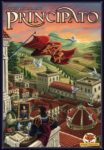
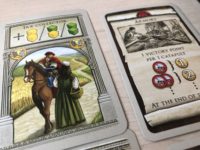
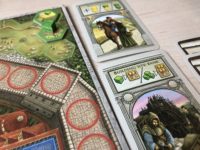
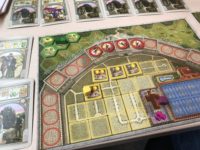
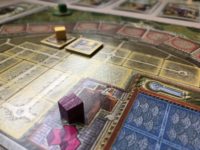
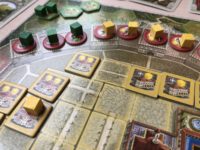
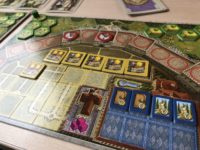

Sam says
I'm a huge fan of this designer's Eclipse, but Principato is a different beast. In fact using the word 'beast' is perhaps inappropriate, because it's an easier teach, an easier learn, and a faster play than its space-themed sibling. Unfortunately though, Principato falls flat for me - take away the battles and it's a pretty repetitious experience that feels too long. Because the food and the money are both of equal value, there's no real dynamic or tension between them: as your principality grows, there's no sense of evolution or development, just more of the same stuff. To be fair, the card system is neat, because it allows you to prevent potentially-helpful cards falling into opponents' hands. But what's happening with those cards just doesn't feel all that exciting or interesting compared to other games out there. Kids will get more of a kick out of something like Machi Koro or King of Tokyo, to name but two. And puzzle-loving gamers will get more brain-burning satisfaction from things like Trajan or Quadropolis. Principato feels like it falls between these stalls somewhere - simple enough to engage while you are playing, but kind of forgettable afterwards.